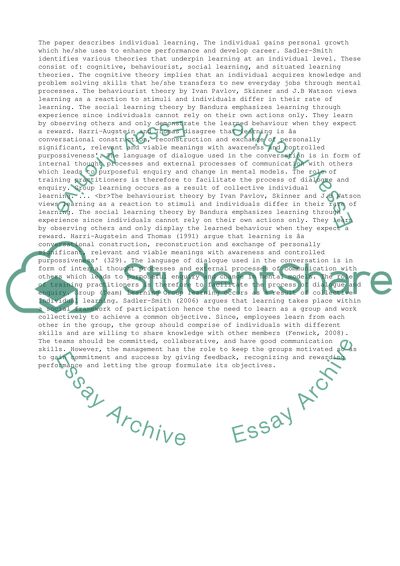Cite this document
(“Learning, Training and Development Essay Example | Topics and Well Written Essays - 3000 words”, n.d.)
Retrieved de https://studentshare.org/management/1392251-learning-training-and-development
Retrieved de https://studentshare.org/management/1392251-learning-training-and-development
(Learning, Training and Development Essay Example | Topics and Well Written Essays - 3000 Words)
https://studentshare.org/management/1392251-learning-training-and-development.
https://studentshare.org/management/1392251-learning-training-and-development.
“Learning, Training and Development Essay Example | Topics and Well Written Essays - 3000 Words”, n.d. https://studentshare.org/management/1392251-learning-training-and-development.


